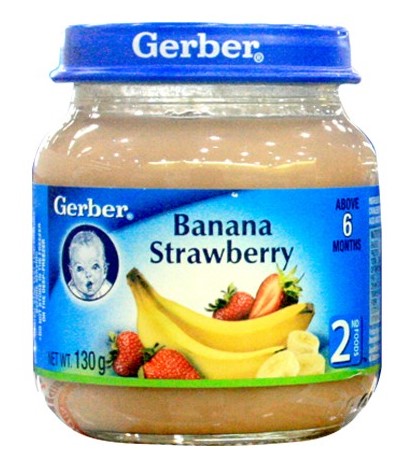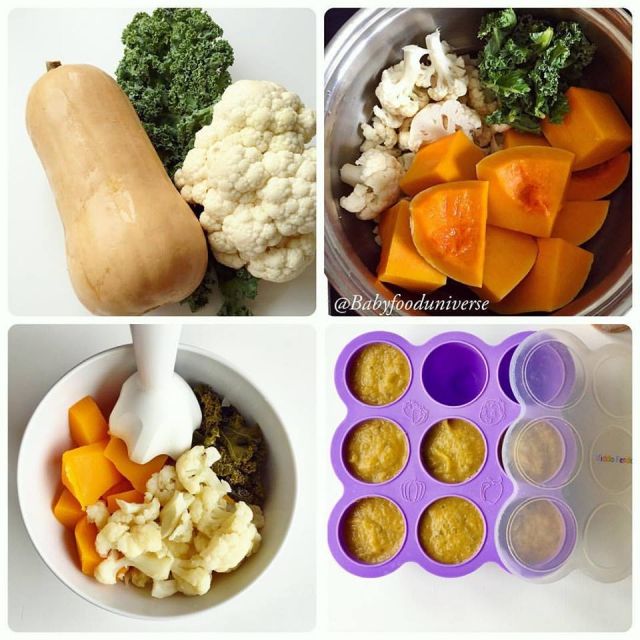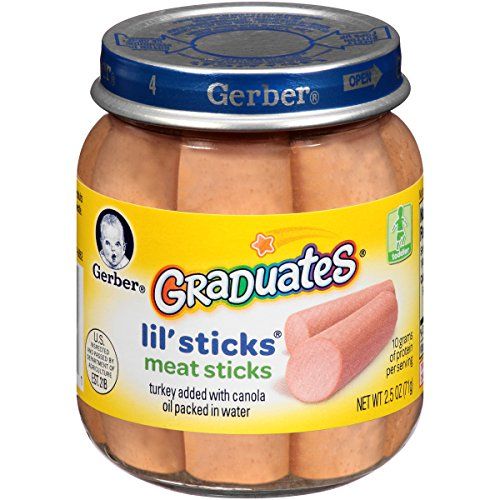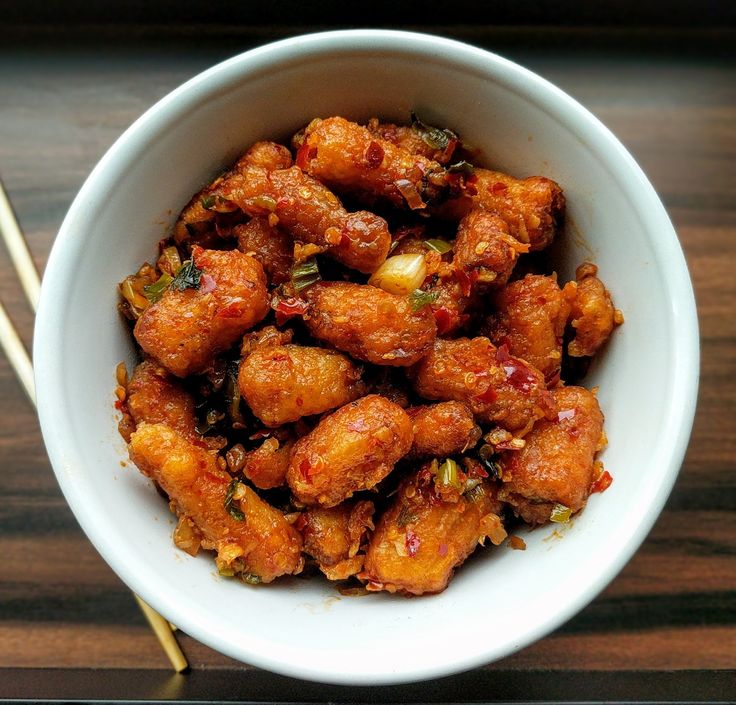Gerber level 2 baby food
When is a child ready to try a bit more texture?
Once your baby has mastered the art of slurping down smooth purees, it may be time to expand their culinary horizons with Stage 2 baby food. Your little gourmand isn’t quite ready to dine on a plate of spaghetti and meatballs just yet, but Stage 2 foods will give them the opportunity to sample new tastes, as well as consistencies.
Think your baby is ready to graduate onto the next stage of baby food? Here, parents and experts weigh in on Stage 2 baby food. Bon appetit!
What is Stage 2 baby food?
While the jarred Stage 2 baby food you find at the store is typically combinations of food (“sweet potato and chicken dinner”), it’s important to keep in mind this stage is more about the consistency of the food.
“While Stage 1 baby food is completely pureed, Stage 2 baby food has a bit more texture to it,” says Dr. Zulma Laracuente, a pediatrician in Alexandria, Louisiana. “The concept behind slowly transitioning baby from purees to thicker solids is to get them used to chewing and swallowing. ”
Of course, every child develops at their own individual pace, so check with your child’s doctor for baby food recommendations during the first 12 months.
When to start Stage 2 baby food
The Stage 2 baby food age may vary based on when your infant started eating Stage 1 foods. The general age recommendation for Stage 1 baby food is between 4 and 6 months, so taking into consideration how long — and how well — your child has been eating these foods will help you determine if they’re ready to move up. According to Laracuente, babies are usually ready for Stage 2 between 6 and 8 months old — but make sure your little one has honed their Stage 1 skills before making the leap.
“Once your baby has done well with Stage 1 solids and has tried multiple foods, it is safe to advance to Stage 2 baby food,” says Dr. Melanie Custer, a pediatrician at at West Bend Pediatrics at Children’s Hospital of Wisconsin. “These foods usually have multiple ingredients, including some spices and are thicker in consistency. ”
”
“These foods usually have multiple ingredients, including some spices and are thicker in consistency.”
DR. MELANIE CUSTER, PEDIATRICIAN
Signs baby is ready to start Stage 2 food
How do you know if your baby is nailing it with their Stage 1 foods and ready for the next step? Simply put, they’re eating and swallowing.
“As your baby’s oral skills develop and improve, you can move on to Stage 2 foods, which are purees with small chunks and texture,” says Jenifer Thompson, R.D., an advanced practice dietician at Johns Hopkins in Baltimore.
Thompson says in order to move on to Stage 2 foods, babies should be consistently taking the spoon in their mouth when you offer it to them, without spitting or pushing it back out.
“Once my baby was no longer grimacing or letting his food dribble onto his chin, I knew we were ready to move onto Stage 2 foods,” says mom of two Darcy McConnell of Garwood, New Jersey. “I actually have no idea how old he was when we made the switch since I based it off of how well he was eating!”
What Stage 2 baby foods to start with
It’s important to expose your child to a number of foods, most of which are safe at this point.
“By the time they are 7 to 8 months, babies should be eating a variety of foods from different food groups, including cereals, meat and other proteins, yogurt, cheese, vegetables and fruits,” says Thompson.
“Most foods can be prepared for any stage, so long as they’re texturally age-appropriate,” says Dr. Kristen Treegoob, a pediatrician at Children’s Hospital of Philadelphia. “When we think of Stage 2 baby food, we’re thinking of thicker purees with some mashable bits.”
Experts advise introducing as many different foods as possible during this stage of food development so your baby gets accustomed to them.
“While bananas, applesauce and peaches are good options and most babies like them, as they are naturally sweet, it is also important to try other foods that aren’t as common and popular, such as beets, rhubarb and asparagus, so they develop a taste for them,” says Custer.
Another thing to keep in mind is that the American Academy of Pediatrics (AAP) no longer recommends delaying the introduction of allergenic foods, particularly peanuts. While it was once advised to wait until your baby was at least 10 months to introduce peanut-containing foods, the AAP now recommends giving babies with no known egg allergy or eczema, infant-safe forms of peanut between 4 to 6 months old. Babies with mild eczema should wait until at least 6 months, and for babies with severe eczema, speak to their doctor before giving them peanut-containing foods. (To find out if your baby has an egg allergy, they must be tested by their pediatrician.)
While it was once advised to wait until your baby was at least 10 months to introduce peanut-containing foods, the AAP now recommends giving babies with no known egg allergy or eczema, infant-safe forms of peanut between 4 to 6 months old. Babies with mild eczema should wait until at least 6 months, and for babies with severe eczema, speak to their doctor before giving them peanut-containing foods. (To find out if your baby has an egg allergy, they must be tested by their pediatrician.)
Which foods to avoid during Stage 2
Even though your little one is venturing into new food texture territory with Stage 2, you should still avoid giving them chunks and small pieces of food, which can pose a serious risk. (Food may be thicker at Stage 2, but it’s still all about the purees and mashes at this point.)
“Infants may have any food that is texture-appropriate for their developmental feeding stage, but it’s important to stay away from choking hazards, such as whole grapes, nuts and seeds,” says Treegoob.
“Infants may have any food that is texture-appropriate for their developmental feeding stage, but it’s important to stay away from choking hazards, such as whole grapes, nuts and seeds.”
DR. KRISTEN TREEGOOB, PEDIATRICIAN
Also, avoid giving your baby honey — raw or cooked — before the age of 12 months, as it may cause a botulism infection.
And finally, when it comes to your baby’s beverage, steer clear of juice. The AAP recommends parents eschew juice, which has “no nutritional benefits over whole fruit,” until at least 1. “At this point, it’s best to stick with breast milk, formula or the odd bit of water (1 to 2 ounces a day), which is mainly for introducing your baby to the skill of using a sippy cup,” says Thompson.
How to start Stage 2 foods safely
Baby should be sitting in a highchair when eating and never left alone. You’ll still be spooning food into your baby’s mouth at this point, but don’t be afraid to let your little one take a whirl at self-feeding in order to get in some practice using utensils.
“At around 9 months, we started letting our son try his hand at feeding himself in his highchair,” says mom of two Erin Henderson, of Waltham, Massachusetts. “It was a mess, but he obviously enjoyed the learning experience.”
Also, during the latter half of your baby’s Stage 2 stint, they may learn how to grab things with their thumb and forefinger and bring them to their mouth.
“Between 8 and 12 months, babies develop the pincer grasp ability and should be able to pick up small pieces of finger food, such as Cheerios or puffs,” says Thompson.
As your baby grows and hones their eating skills, they’ll cut down a bit on how much breast milk or formula they drink — but keep in mind, that should still be their primary source of nutrients.
“Most infants will naturally start to moderate their breast milk or formula intake once their solid intake increases,” says Treegoob. “Solid food may start to account for a significant source of nutritional intake closer to 7 to 9 months. At this time, parents may notice that their baby shows interest in smaller or less frequent bottle or breastfeeds. As long as their weight remains on track and baby is drinking enough milk to stay well-hydrated, there should be no need for concern. Infants typically take somewhere between 24 to 40 ounces of breast milk or formula between 4 to 6 months and 24 to 32 ounces from 6 to 9 months.”
At this time, parents may notice that their baby shows interest in smaller or less frequent bottle or breastfeeds. As long as their weight remains on track and baby is drinking enough milk to stay well-hydrated, there should be no need for concern. Infants typically take somewhere between 24 to 40 ounces of breast milk or formula between 4 to 6 months and 24 to 32 ounces from 6 to 9 months.”
According to the AAP, babies should be eating about 4 ounces of solids (about one small jar of baby food) at each of their meals. And if you’re wondering how long baby food lasts, experts typically recommend 24-48 hours in the fridge or up to 3 months in the freezer.
Lastly, bear in mind that if at first you don’t succeed with a food, try, try again.
“At this age, if babies grimace when taking a bite or shake themselves, it is most often because of a texture issue, not the actual taste,” says Custer. “It is important to keep introducing these foods as it may take a baby up to 15 times to get used to a texture before you can say for sure he/she doesn’t like it. ”
”
Ready for the next stage?
- Stage 3 baby food
What It Is, When to Start, and Options to Try
Accompanying your child through the different stages of learning how to eat real food is an exciting journey. Sometimes, along with the sense of pride — Look, they polished off the whole jar! — you can feel a little confused. How are you supposed to navigate the milestones?
Let’s start at the beginning: What do the stages of baby food mean, anyway?
Rome wasn’t built in a day, and your baby’s digestive system won’t make the leap from liquid to solid in one day either. That’s what the stages of baby food are for — to help your baby manage the mechanics of eating and to make the transition easier on your baby’s digestive system.
Defining the stages across the brands
While the different stages of baby food aren’t standardized (it would make your life easier if they were!), most popular brands more-or-less follow these four stages:
- Stage 1: 4 to 6 months (watery puree of a single ingredient)
- Stage 2: 6 to 9 months (thicker texture that is strained or mashed)
- Stage 3: 10 to 12 months (mush that has soft, chewable, small chunks)
- Stage 4: After 12 months (finger foods and small, soft pieces of foods you share from your own supper)
What is the difference between stage 1 and stage 2 food?
Stage 1 foods are pretty watery. They’re pureed into a smooth paste that can drip off a spoon easily, so stock up on your bibs. These foods are usually made of a single ingredient: oatmeal cereal, apple, carrots. Your baby will start off eating about half a teaspoon of this.
They’re pureed into a smooth paste that can drip off a spoon easily, so stock up on your bibs. These foods are usually made of a single ingredient: oatmeal cereal, apple, carrots. Your baby will start off eating about half a teaspoon of this.
Stage 2 foods get more exciting. These are strained or mashed into a dense paste. They’re made with a combination of foods that can include legumes and even meats or fish. They may combine flavors, like fruit and veggie blends. Your baby’s appetite is growing and you’ll have to keep pace with bigger portions.
At around 6 to 9 months, your baby is probably ready to move on to stage 2 foods. Not every baby will stick to this schedule simply because every child is a world to their own.
Here are some signs that your child is ready to move on:
- Tongue reflex: At around five months, your child will start losing their tongue thrust reflex and won’t immediately push out the food that you try to feed them.

- More please: They’ll easily polish off the stage 1 foods and look hungry for more.
- Variety: They’ll have eaten foods from all the food categories (vegetables, fruits, legumes, grains, meat) and shown no allergy or intolerance.
- Enjoyment: They’re managing spoonfuls of stage 1 foods easily, mouthing and swallowing happily.
At this exciting stage, feel free to give your baby most types of foods. By offering them a wide range of tastes and textures, you’re giving them a foundation for healthy eating habits — as well as making it easier for yourself. Keep in mind the following safety points:
- Choking hazards: Avoid nuts, seeds, and popcorn at this stage. And make sure to slice round foods like grapes and hot dogs lengthwise.
- No honey: Children younger than 12 months should not be given honey because it could lead to a botulism infection.
- No juice: Follow AAP guidelines and stick with breast milk, formula or a little water and steer clear of juices.

- Safe feeding: Always strap your child into their high chair and keep an eye on them while they’re eating.
And if you’re wondering about peanuts, here’s the scoop: A 2017 release from the National Institutes of Health suggests exposing children to peanut-containing foods as early as 4 months old. (Wait till 6 months for children with mild or moderate eczema.)
Surprised? Don’t be. A recent study suggested that Israeli kids rarely suffer from peanut allergies because they’re munching on Bamba, a peanut-based snack, from as early as 3 months. Talk to your doctor about suggested safe ways to incorporate peanut products into your little one’s diet.
What’s on the menu for stage 2 baby foods? Basically, you can go the store-bought or the homemade route. Or you can mix both depending on how much time you have. It’s up to you and your personal schedule.
Here are tasty ideas for both options.
Store-bought stage 2 baby food
- Plum: These organic blends come in easy-to-transport pouches.
 Try pear, spinach, and pea, or banana and pumpkin.
Try pear, spinach, and pea, or banana and pumpkin. - Beech-Nut: Options are available in jars and pouches. Serve up some apples and bananas or pineapple, pear, and avocado.
- Earth’s Best: Another organic option, in pouches or jars. Try sweet potato, barley, and garbanzo or pasta with tomato and white bean.
- Gerber: A classic, whether served up from plastic tubs, jars, or pouches. Flavor combinations include peach mango and oatmeal or chicken noodle dinner.
Remember to monitor your little one while they’re eating. Pouches are handy, but the caps can be a choking hazard. Glass jars are at risk of breaking, so keep them out of baby’s reach. Your baby should always enjoy snacks and meals with attentive adult supervision.
Homemade stage 2 baby food
Cooking up a storm for your baby’s budding taste buds at this stage doesn’t have to be challenging. Here are a few recipes to get you going. (You can find even more baby food recipes here.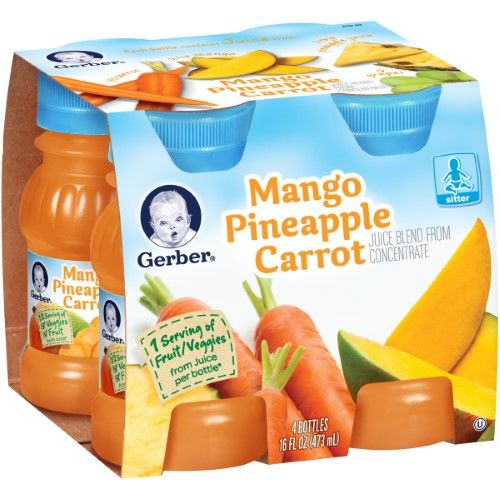 )
)
Don’t shy away from spices and herbs: your baby will appreciate the added flavor, and the micronutrients in them will give their immune system a boost.
- Apple, butternut, and carrot: Boil the ingredients until they test soft with a fork. Drain some of the water, but set it aside in case you need to thin the mixture. Sprinkle in a little curry and blend.
- Blueberries and chickpeas: You can cook up your own chickpeas or use a prepared version to save time. Mix equal amounts of blueberries and chickpeas. Blend and add breastmilk, formula, or water to get the right consistency. You can also add in some rice for extra oomph and texture.
- Salmon with roasted zucchini and fennel: Spray the salmon and vegetables with oil and broil for about 15 minutes. Add chopped parsley and blend. You can thin the mixture with breastmilk, formula, or water.
Enjoy this stage with your baby because it won’t be long before they move on to the next stages. And then, sooner than you think, you may be facing competition for that last slice of caramel-topped cheesecake.
And then, sooner than you think, you may be facing competition for that last slice of caramel-topped cheesecake.
Gerber by Nestlé launches plant-based baby food
USA 04/25/2022
Source: The DairyNews
ENRU
Nestlé-owned Gerber has announced the launch of a new line of carbon-neutral plant-based protein baby food called Plant-tastic, The DairyNews reports citing Foodbev.
Plant-tastic includes a selection of organic foods, snacks and meals made with plant-based, nutrient-rich ingredients. Every Plant-tastic recipe is made with legumes like chickpeas, beans and lentils.
Every Plant-tastic recipe is made with legumes like chickpeas, beans and lentils.
Gerber President and CEO Tarun Malkani comments, “We hear from parents that they want a greater variety of plant-based protein products that are in line with their nutritional and environmental values. Gerber Plant-tastic offers nutrition for all stages of a child's life, from organic baby foods, snacks and meals. We are proud that the entire Plant-tastic product range is certified carbon neutral, further confirming our commitment to climate-smart nutrition.”
The range is available in retail stores throughout the United States.
Read operational news in The DairyNews telegram channel
Popular topics
hot topic
27.03.2023
How Russia makes Kazakhstan addicted to cheap milk powder
There is a surplus in milk production in Russia and processors are looking for new sales markets. Mereke Ulmanov, correspondent of The DairyNews, looked into how they are mastering the dairy market in Kazakhstan, how local traders react to it, and how the dominance of cheap Russian raw materials can turn out for the republic.
Mereke Ulmanov, correspondent of The DairyNews, looked into how they are mastering the dairy market in Kazakhstan, how local traders react to it, and how the dominance of cheap Russian raw materials can turn out for the republic.
Analytics
04/10/2023
Dairy Index DIA decreased by 57 kopecks amid lower export prices for Belarusian dairy products
Dairy Index DIA fell by two kopecks to 34.58 rubles/kg
Analytics
Vladimir Zhiltsov, chairman of the stud farm-collective farm "Aurora"
The milk market is cyclical. The last crisis, I remember, was in 2018, but in 2022, a liter went up by 23%. That's why we don't panic. Now the volumes of the raw milk market will decrease (some will slaughter cattle, some will underfeed), then there will be a shortage, after which everything will go in a new circle.
Now the volumes of the raw milk market will decrease (some will slaughter cattle, some will underfeed), then there will be a shortage, after which everything will go in a new circle.
Ivan Sauer, General Director of the agricultural firm "Rodina"
No one will go to raise virgin soil from the city. Those who left, they left forever. I'm just scared if we do not take drastic measures, what awaits us in ten years.
Ludmila Karnyushkina, Head of Marketing and Assortment Management Department, TS Europe
The modern buyer is very selective, he wants to have a guaranteed high quality, he prefers a fresh product - today's milk or kefir, yesterday's maximum. When choosing products, there is also another clear trend - a commitment to a local manufacturer.
When choosing products, there is also another clear trend - a commitment to a local manufacturer.
Tatyana Gordeeva, Director of the Development and Sales Department of Neos-Ingredients LLC
If earlier most of the modified starches were imported from Europe, then at the time of their inclusion in the sanctions list, no one could figure out what to do next. Because, in principle, modified starches were not imported into Russia from countries other than European ones.
Andrey Dakhnovich, Chairman of the Board of Directors of the Elansky and Semikarakorsky cheese-making plants
We see that if there are no shocks in the market, then the existing trends - the growth of milk production, the weak purchasing power of the population, the virtual absence of exports of dairy products to non-CIS countries - will lead to a decrease in the purchase cost of milk.
Igor Baringolts, Chairman of the Board of Directors of RM-Agro
We are developing a project for a hay dehydration plant, which is being promoted by the Association of Hay and Feed Exporters - we see the future behind this, because high-quality hay allows us to make high-quality feed for animal health and increase milk yield. At the same time, today a ton of hay costs twice as much as a ton of grain - this is also a separate type of business.
Igor Moskovtsev, General Director of JSC "Korenovsky MKK"
The production of cheese curds is loaded at 100%. And we plan to increase production volumes, carry out reconstruction, install new equipment in order to maintain the entire range of produced curds in the right amount. This category is fresh, expiration dates are limited, so you need to produce everything at once. I think we'll manage.
This category is fresh, expiration dates are limited, so you need to produce everything at once. I think we'll manage.
Igor Eliseenko, General Director of MolSib
In milk production among farms, the process of consolidation has been going on for a long time, and nothing will change radically. Small and inefficient farms will either be sold or abandon animal husbandry in favor of crop production. As for processing, in my opinion, we should not expect a serious reduction in enterprises here. Everyone prepared for the situation in whatever way they could, huddled, found their own ways to sell products, perhaps even gray schemes.
Alexander Zernov, General Director of Pöttinger LLC
In order not to find yourself in a situation where your expansion is hindered by the level of equipment, you must take as a basis the goals that the economy sets for 3-5 years.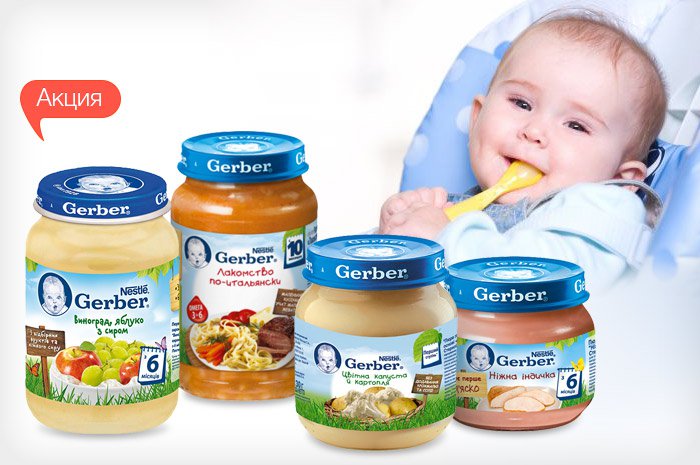 This is the optimal horizon, taking into account the depreciation of equipment and the development of technologies. The realistic life of the equipment is 7 years, the maximum is about 10.
This is the optimal horizon, taking into account the depreciation of equipment and the development of technologies. The realistic life of the equipment is 7 years, the maximum is about 10.
Elena Kruk, Head of Communications Department, JSC Zolotye Meadows
Many suppliers of packaging and spare parts for equipment have switched to prepaid relationships with manufacturers, which entails additional unforeseen costs on the part of the dairymen. We had to revise budgets in order to purchase packaging. The cost of packaging has doubled, its cost reaches 15% depending on the product.
Dmitry Mironchikov, independent dairy market consultant
Everyone has their own vision of milk prices: processors want a lower price, producers want a higher one. It's always like that. Personally, I do not see any prerequisites for a rise in prices for raw milk next year, but I do not see any reasons for a decrease either. There should be some stability in general, at least the first three quarters.
It's always like that. Personally, I do not see any prerequisites for a rise in prices for raw milk next year, but I do not see any reasons for a decrease either. There should be some stability in general, at least the first three quarters.
Alena Krekoten, Chief Technologist, Ice Plus LLP
At first, the farmers did not understand what we wanted from them at all. What kind of indicators are these: somatic cells, QMAFAnM, bacteria contamination ... But over time they got used to it, got involved. And those who do not pass in terms of quality were eliminated on their own, because they began to pay less. And for high-quality milk, on the contrary, we raised the price. And the producers have a healthy motivation. Any sane person understands: "Why "chemical" when you can make normal milk - and get a good price?"
Svetlana Kuzmicheva, Development Director, MLK Group
We do not accumulate anything in an attempt to "catch the wave" of prices. We have our own development strategy, we clearly understand that there are stock fluctuations, but keeping something in stock and then trying to sell it is not about us. In our opinion, it is not very expedient to keep money in warehouses.
We have our own development strategy, we clearly understand that there are stock fluctuations, but keeping something in stock and then trying to sell it is not about us. In our opinion, it is not very expedient to keep money in warehouses.
Armen Khurshudyan, Production Director of Ice LLP
Of course, genetics plays a very important role. But genetic potential is one thing, and how it is realized is another. And it depends on how good farmers we are. The fact that we took the best genetics does not mean that the cow should give us something. If you asked me what the biggest problem of all cows is, I would say that they are farmers. We create most of the existing problems for the cows ourselves.
Gennady Zenchenko, Chairman of the Board of the Meat and Dairy Union of Kazakhstan
Who from the Ministry of Agriculture even thought - who will work? Where are the doctors in the countryside? Where is the person who will go directly to the cow? We have one farm after another "burning" from brucellosis, from foot-and-mouth disease - without having time to receive subsidies to the end.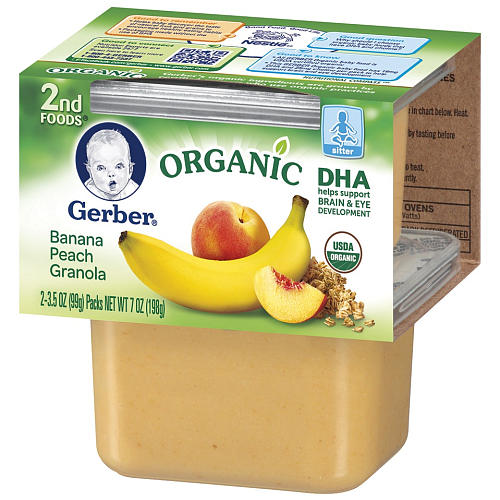
Vladimir Labinov, Minister of Agriculture of the Republic of Karelia
Identification must be - this is an axiom that is not subject to discussion. We will try to keep up in this direction, support it in every possible way and implement it at home. In Karelia, the livestock is small, it has long been identified. We have no problems with this at the level of the republic. Another thing is how this system will work on a national scale.
Igor Eliseenko, General Director of Molsib
I do not know a single leader in the industry who would throw up their hands and say that they will not do anything else. A business can be closed, but it is almost impossible to restore it, especially for dairy farms where livestock is kept and trained personnel work.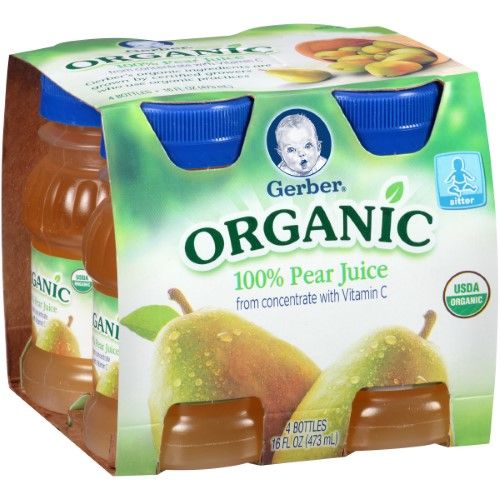
Lyubov Guseva, director of the Liton company
Now we have switched completely to Russian raw materials. We tried to level out all the shortcomings in the film, since this is a rather capricious package, with its own shortcomings, for example, when welding. We did everything to level out shortcomings in equipment, in the qualifications of personnel at dairy plants. That is, the efforts of both parties were required here, and the film also had to be slightly adapted at the dairy plant.
Olga Kosnikova, food technologist, popularizer of science
It often happens that ordinary employees, not technologists, do not have sufficient knowledge about the product, simply because their activities have a different specificity. It is also important to tell employees about what consumers may ask, what they are interested in, what the product actually consists of.
It is also important to tell employees about what consumers may ask, what they are interested in, what the product actually consists of.
Andrea Paoletti, Export Manager Ave Technologies
In the 1990s, we visited dairies in Italy to convince them to try bottling in PET bottles - none of them used to bottle in PET, they used glass, film, cardboard. From that moment on, we began to supply them with equipment for filling milk in PET. Today in Italy we supply 80% of PET filling equipment to dairies.
90,000 In baby food Gerber and Nurture Inc. found heavy metals Experts from the Subcommittee on Economic and Consumer Policy of the US House of Representatives found dangerous levels of toxic metals in the baby food of several American brands. CNN writes about the progress of the investigation.
CNN writes about the progress of the investigation.
- Testing found high levels of substances such as arsenic, lead, cadmium and mercury in baby products. These heavy toxic metals pose a serious health hazard to children.
- Products from Gerber, Nurture Inc., Hain Celestial Group and Beech-Nutrition.
- Manufacturers are accused of knowingly selling these unlabeled products to parents who are unaware of the risks they are putting their children at.
- Experts and the World Health Organization also draw attention to the fact that exposure to these metals can lead to a decrease in intelligence, inhibition of the neurological development of infants and impaired brain function.
US baby food market situation
According to the 2019 Healthy Babies Bright Futures (HBBF) report, 95% of baby food samples tested contain at least one of four substances: arsenic, mercury, cadmium or lead.
- Experts tested 168 baby food brands.
 25% of them contained all four substances at once.
25% of them contained all four substances at once. - The researchers specifically recommended avoiding rice-based foods, as well as carrots, sweet potatoes, and fruit juices.
- Instead, scientists recommended steaming vegetables for children, feeding them cereals, fruits for breakfast, and using a frozen banana or chilled cucumber to relieve teething pain.
In Russia
, New Zealand (1), Russia (4), Finland (1), Switzerland (1) and Estonia (1), which are sold in Russia.
- Experts did not reveal any violations, but only the Belarusian product showed full compliance with all quality standards.
- Experts tested the mixtures for microbiological safety and the presence of preservatives and antibiotics.
- The results showed that the products are "free of dangerous microorganisms (including salmonella), mold and yeast, preservatives and antibiotics, lead, mercury, cadmium and arsenic."
Child food poisoning cases
- On November 24, 2009 , two businessmen were executed in China for producing and selling baby milk containing melamine, which is widely used to make dyes, glues and concrete.
